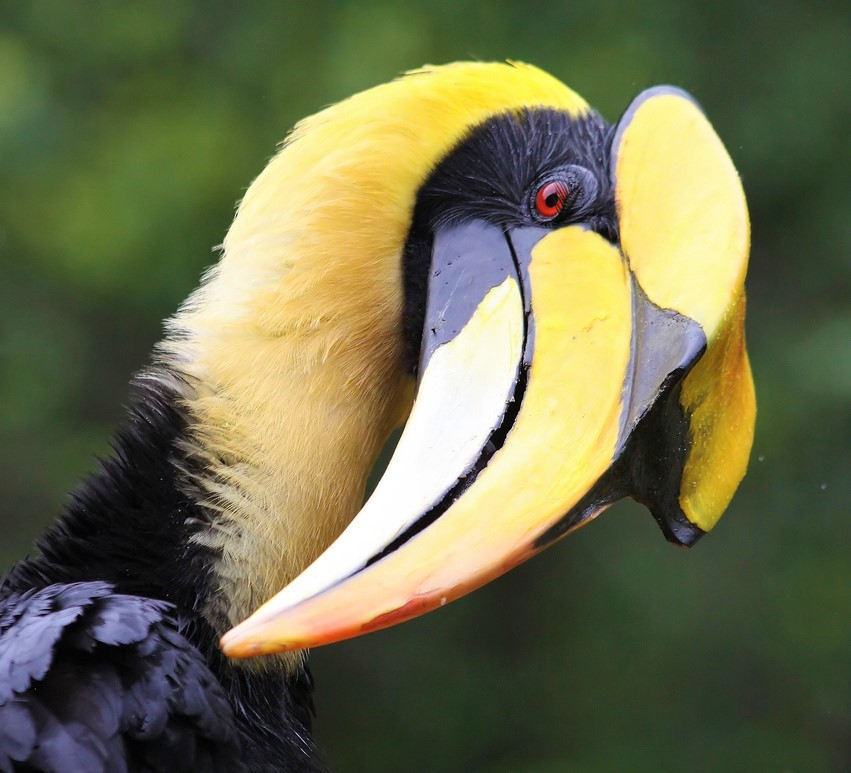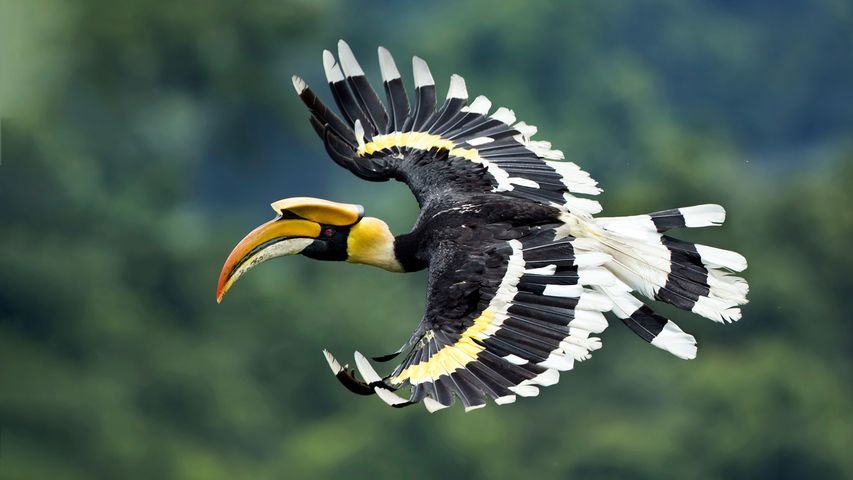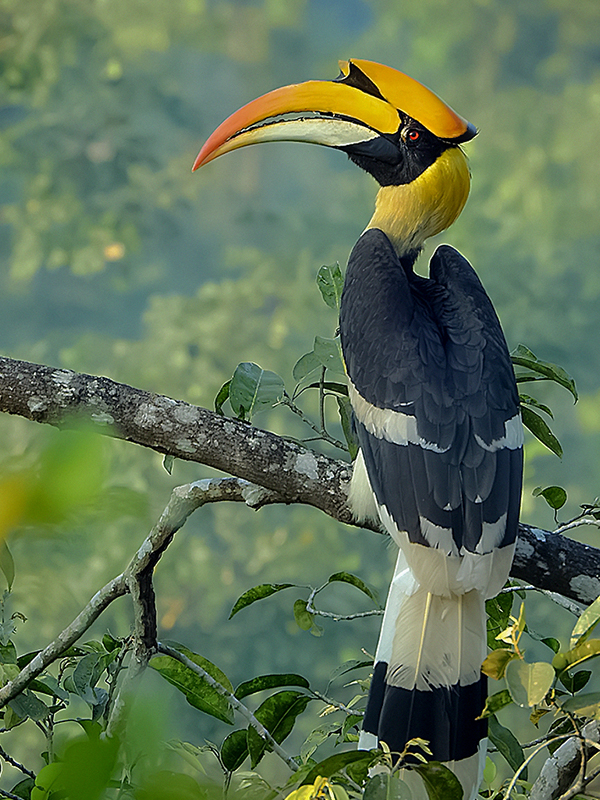
Scientific name: Bucerotidae
Family: Bucerotidae
Class: Aves
Order: Bucerotiformes
Kingdom: Animalia
Phylum: Chordata
Length: 95 – 120 cm
Wingspan: 151 – 178 cm

The Hornbill is a bird with long, down-curved bill which is frequently brightly colored and sometimes has a casque on the upper mandible. It belongs to Family birds found in tropical, subtropical Africa and Melanesia. Most of Hornbill’s main residence is in tropical and sub-tropical Africa, Asia and the Pacific Islands. The main feature of the Hornbill is the huge lips of bright colors curved downwards. Growth is seen on the lips most of the time. The female Hornbill lays eggs in the hollow of the tree. Later, with the help of the male hornbill, the female lays eggs and raises the baby. At that time, it does not leave the house. The male bird collects food and feeds it to the female bird. This keeps the baby safe from various predatory species like snakes. It is always nearby until the baby learns to fly. The Hornbill is the only bird in the bird world whose spine atlas and the first two vertebrae are connected together. Probably a factor as to why they’re doing so poorly. A number of endangered species of Hornbill have been declared endangered. Most of them are island species.

They have two layers of kidneys. As the only bird, the first two neck bones of the bird, the axis and the atlas, are intertwined. As a result, many long beaks have been able to keep and hold more stable. The birds of this family of birds are known to be omnivorous. Starting from eating fruits, small animals are also their main food. They love to be in pairs. They nest in naturally occurring tree holes and sometimes in oceanic mountain holes. Many species of the bird have become extinct and endangered. As a result, most of the small number of bird are being forced to stay within small boundaries.
